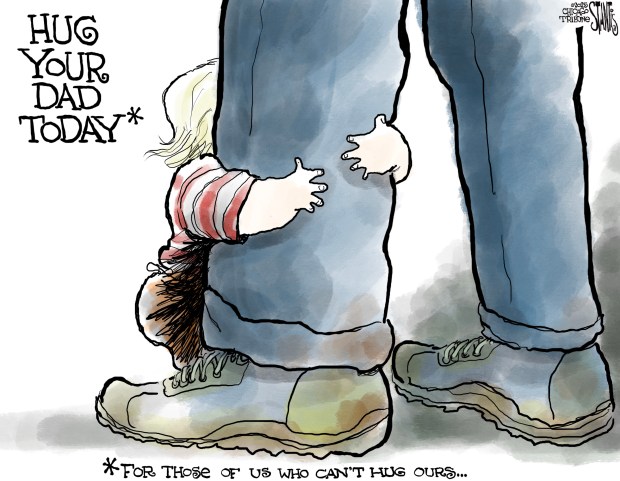Whether it’s Macomb, Carbondale or DeKalb, Illinois’ “directional” public universities such as Western Illinois, Southern Illinois, and Northern Illinois have an outsize impact on the communities they dominate. When the schools catch a fiscal cold, the impact spreads.
Fewer faculty and staff members means less spending at local businesses, reduced housing demand and less incentive for others to invest in future growth.
Not everyone in these small cities works on campus, of course. DeKalb, for example, is doing well in the relatively new business of data centers. But anyone who has spent time in the above cities knows they’re fundamentally college towns. So the crisis at Western Illinois is bad news for both Macomb and the Quad Cities, where Western has a campus. Very bad news.
In recent days. Western has announced two big layoffs. On Friday, the school announced it was eliminating 89 positions, including 57 nontenured faculty members and 32 staffers. That came after some 35 faculty roles had been nixed, or “not renewed,” last month. Adding to that is a hiring freeze, the disappearance of several vacant positions, a Quad Cities pullback and all the other types of things organizations typically do when they are in crisis.
At the end of all this, we reckon, Western’s faculty will look a lot grayer. Not ideal. Students need a mix.
Why is this happening? It’s not complicated. Student enrollment at Western has fallen off the proverbial cliff.
Between 2010 and 2014, the number of students at the school hovered around 12,000. But then it took a dive over several years. In fall 2023, the university enrolled 7,023 students. Interim President Kristi Mindrup has said she expects enrollment this fall to be between 5,500 and 6,000 students. That might yet change, but it’s still a big drop in one year and not something so easily blamed on demographics.
We’d also wager most Illinoisans didn’t know that some of their state universities are currently operating at 50% of previous capacity.
Obviously, fewer faculty and support services are needed to teach 6,000 students than 12,000. That reality might be painful, but it is inescapable and must be faced; we’ve made the same argument about what has been happening in Chicago Public Schools.
Why did enrollment fall off? Demographics are a major cause, which is a fancy way of saying there are fewer 18-year-olds. But so is tuition. In-state tuition and fees at WIU are now $12,848. Room and board is an additional $10,500. By offering tuition discounts, some private schools are now quite competitive. Moreover, even though Western has been raising what it charges, it is dealing with a student demographic far more price-sensitive than at many competing universities. That’s because it attracts more students from lower-income families.
There’s another issue here too. Students have many choices of where to go to school. Once word gets out of disappearing faculty and courses and a general malaise on campus, the job of recruitment becomes all the harder. It’s a Catch-22, and it can easily spiral out of control.
There is some evidence in Macomb that the powers that be, the board of trustees, were slow to face up to this reality of fewer students, ran deficit budgets for too long and then found themselves out of options. In fairness, nobody likes laying off people, and yet the bulk of educational budgets is tied up in personnel lines. Short of selling off buildings, there are not a lot of other options to reduce costs.
Faculty unions and others also blame state budget cuts and unfair funding mechanisms. The state’s Commission on Equitable Public University Funding, filled with stakeholders, issued a report this spring saying that Illinois public universities are underfunded as a whole by some $1.4 billion, suggesting that Illinois add another $135 million each year to create a road to “fully funding” these schools for lots of worthy reasons. But that’s on top of increases that already have taken place under Gov. JB Pritzker, and terms such as “fully funded” are, of course, contested phrases.
Then there’s the matter of how the state should divide up its higher education dollars. Illinois Senate Majority Leader Kimberly Lightford announced last week that she and state Rep. Carol Ammons are proposing a shrewdly named bill called the Adequate and Equitable Funding Formula for Public Universities Act. The idea here is that instead of the current incremental budget process, Illinois would get a formula that aims to be more student-centered and that looks at things such as the income level of students served and so on.
Here again, you have contested territory. In Urbana-Champaign, the dominant, if oft-tacit, view is that the flagship University of Illinois deserves funding that reflects its research stature and that is need to compete with other flagships. But if you’re in Macomb or DeKalb, you’re more likely to argue that serving the state’s less affluent students is where the state should be throwing its support. The Lightford bill, of course, claims Illinois can do both. But that is far from easy when others also are going cap in hand.
Illinois has debated these issues for decades. And they’re not that different from those in other states, where “public ivy” flagships seek out the lion’s share of funding to aid in their quest for prestige and the best students. Paradoxically, these are the schools that have the most access to out-of-state students who pay the highest tuition.
The Democrats who control Springfield will have to wrestle with this. We see great value in these schools named after the state and points on the compass. They have changed the lives of many young Illinoisans, have contributed to the diversification of corporate America and professions such as law, and serve as anchors in their corners of this state. They also tend to be easier than others if you want to transfer in credits from a community college.
But that enrollment decline stares us all in the face. Without enough students, public money is wasted. We’ve no wish to pick on Western, which is just one school dealing with a problem common to many. But it’s emblematic.
We support its pursuit of excellence and its work with first-generation students and those who are working two jobs to get themselves through school. And we can think of far worse uses for public money than higher education, given how universities anchor local economies even as they lift up their students.
But Western still has to acknowledge a painful reality. It will have to become a still great, much smaller university.
Submit a letter, of no more than 400 words, to the editor here or email letters@chicagotribune.com.




